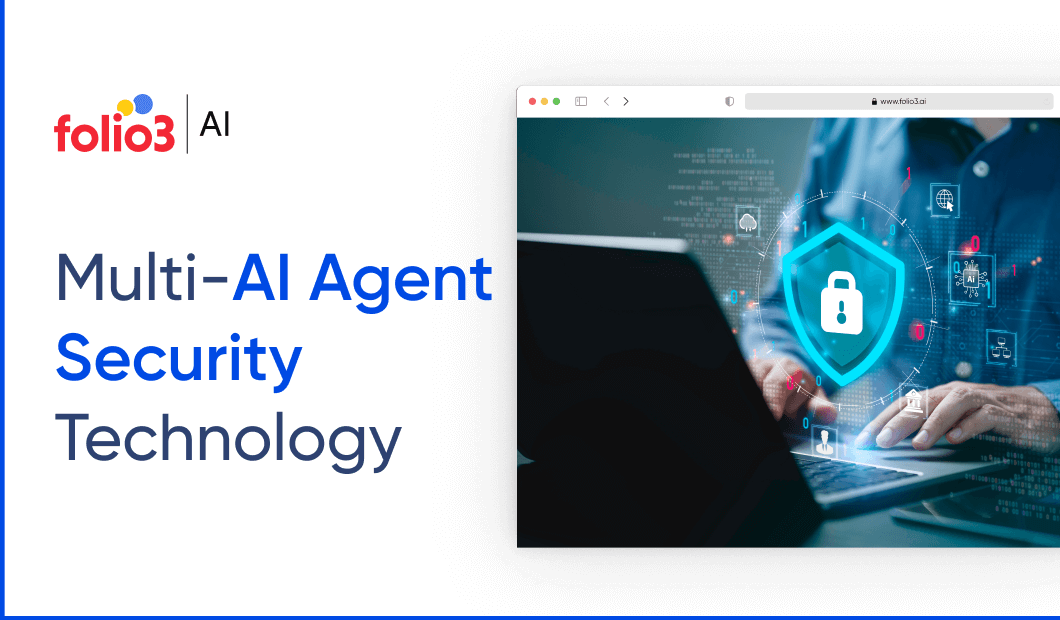Traditional cybersecurity methods are proving insufficient against advanced cyber threats. The SolarWinds breach, which compromised major corporations and U.S. agencies, showed how single-agent defenses can be easily bypassed. These old methods rely on a single agent to detect and respond to attacks, making them vulnerable to modern cybercriminals’ sophisticated techniques.
Multi-AI Agent Security Technology addresses this issue by using specialized AI agents working together as a cohesive unit.
Unlike single-agent solutions, multi-AI agent platforms distribute tasks across various intelligent agents, each focused on a specific function such as detection, response, forensics, or deception. Together, these agents collaborate in real-time to outpace modern cybercriminals, offering a more potent, smarter defense essential for protecting today’s interconnected networks, devices, and data.
Check out this blog to understand how multi-AI agent security technology helps in the cybersecurity landscape.
The Growing Complexity of Cyber Threats
Cyber threats are becoming more complicated, and technology is a big part of the reason. With the rapid growth of AI technology, cybercriminals have more tools and ways to exploit systems, networks, and devices. They’re also getting smarter and faster at finding vulnerabilities. This is driving up costs and putting immense strain on companies.
IBM’s 2024 Cost of a Data Breach Report reveals that the global average cost of a data breach has reached an all-time high of $4.48 million. The same report indicates that the organizations take an average of 277 days to identify and contain a breach. Such stats are alarming and mean traditional security tools are no longer efficient.
The reason is that many security tools use signature-based detection or static rule sets, which have become easy to bypass due to the latest cyber threats. Thus, AI latest tools have overcome this gap. Especially AI agent models like single and multi. Single-agent AI platforms—operating as unified engines—often prove inadequate in dynamic environments where threats arise from multiple sources simultaneously.
On the other hand, multi-AI agent security technology systems provide a more important solution by mimicking a layered, team-based approach. These systems deploy autonomous agents with specialized functions, creating strong security measures where breaches are identified and mitigated faster using specialized agents.
Read more about how to build the AI Agent that works for you
Types of AI agents in security
Threat Detection Agents
Threat detection agents are the first line of defense in cybersecurity. They identify potential risks, such as viruses, cyberattacks, or abnormal activity that deviates from the norm. These agents use special techniques, such as checking for known harmful files (signatures), spotting unusual behavior (anomalies), and even using machine learning to find hidden threats.
When they find a problem, threat detection agents can send alerts, block the threat, and help security teams fix the issue quickly. Thus, threat detection agents are a key part of keeping computers safe, especially in Endpoint Detection and Response (EDR) systems. They help protect devices like laptops and servers from advanced attacks that normal security might miss.
Response Agents
Next are Response Agents, special AI tools that quickly detect and tackle cyber threats. These agents are placed on devices or inside networks to watch for suspicious activity and act quickly when something bad happens. They can scan for weaknesses, track network traffic, and spot threats like hacking attempts or viruses.
One of their biggest strengths is automation, they can take quick action without waiting for a human to step in. For example, they might isolate an infected device, apply security updates, or stop a harmful program from spreading. Response Agents help make security teams more efficient, detect threats faster, and reduce the damage from attacks, all while keeping costs lower.
Forensic Agents
Forensic Agents are security tools that act like detectives after a cyberattack. Their job is to carefully study past security incidents to determine how the attack occurred, what systems were affected, and who might be responsible. They collect important data from logs, network traffic, and system files to piece together the full story of the attack.
These agents help security teams learn from past events by identifying exploited weaknesses. Their findings help improve future security by identifying weak points in the system. They also collect evidence to understand and prevent similar attacks later on. Forensic Agents also help create detailed reports that may be used in legal cases or to meet security regulations.
Deception Agents
Deception Agents use tricks to confuse and slow down attackers. They create fake systems, data, or applications called “decoys” that look real to hackers but are actually traps. When attackers target these decoys, security teams can spot them early and learn about their methods without risking real systems.
These agents waste the hacker’s time and resources while protecting important data. With deception agents, organizations gain extra time to respond and strengthen their defenses by luring attackers into fake environments. For example, a deception agent might set up a fake server full of dummy files, making hackers think they’ve found valuable information while the real system stays safe.
Key Features of Multi-AI Agent Security Technology
Decentralized Decision-Making
When discussing multi-AI agent security technology, the agents are designed to operate both independently and collaboratively as a team. Each agent can make decisions independently without needing approval from a central system. This means they can react faster to threats, reducing delays caused by waiting for instructions.
At the same time, agents can share information and coordinate with other agents when needed. This collaboration helps cover more ground and tackle complex cyber threats from multiple angles. For example, while a Response Agent blocks a threat, a Forensic Agent might already be gathering data to investigate how it happened.
Real-Time Threat Intelligence Sharing
Threat Intelligence plays a significant role in keeping organizations and individuals safe from cyber threats. AI agents constantly share what they learn with each other in real time. When one agent detects a threat, it quickly informs other agents across the system. This makes threat detection and response much faster and more accurate.
These agents create a smarter defense network by working together and exchanging information. If a Deception Agent lures an attacker, the data is shared with Detection and Response Agents to stop the attack before it spreads. What it does is not only provide real-time protection but also help organizations build resilience and improve their overall security posture.
Adaptive Security Mechanisms
These AI agents don’t just follow fixed rules—they learn and adapt. Adaptive Security Mechanisms allow the agents to get smarter over time by studying new types of cyberattacks. They adjust their defenses based on hackers’ latest tactics. This contributes greatly to preventing previously unseen attacks and provides organizations with a better approach to securing their systems and data.
When you have such systems, you are always one step ahead of the cybercriminals. For instance, if attackers start using a new type of malware, the AI agents will learn its patterns and improve their ability to detect and stop it the next time. The best part is that these agents can do this in real time, constantly adapting and improving their defenses without any human intervention.
Proactive Threat Prevention
Instead of waiting for an attack to happen, proactive agents try to stop threats before they even start. They analyze patterns and predict where and when a cyberattack might occur. This way, they can block access points or alert security teams in advance. Moreover, AI agents can autonomously make changes to strengthen security measures, such as updating firewalls and patching vulnerabilities.
For example, an AI agent might notice unusual network activity that signals a hacker is preparing an attack. The agent can then shut down risky access points before the attack is launched. Having such proactive agents in place significantly reduces the chances of successful cyberattacks and minimizes the potential damage that could occur.
Self-Healing Security Systems
Self-healing systems are among the most advanced features of multi-AI agent security technology. AI agents can automatically repair and restore normal operations when a cyberattack damages a system or disrupts services. This reduces downtime and keeps the system running smoothly.
These agents might fix corrupted files, reconfigure security settings, or even roll back affected systems to safe versions. For example, if ransomware encrypts specific files, a self-healing system could remove the malware and recover the files from a secure backup without human help. This is a big relief for organizations that want to minimize the impact of cyberattacks.
Applications of Multi-AI Agent Security Technology
The following are key applications of Multi-AI Agent Security across various industries:
Multi-AI Agent Security is widely used in enterprise security to protect businesses from common threats like phishing, ransomware, and insider attacks. AI agents monitor networks, emails, and user behavior to catch suspicious activities early. They can block harmful emails, detect unusual file movements, and stop ransomware before it locks critical data. Some of the applications are
Cloud security
AI agents help secure data and applications hosted on cloud platforms. They monitor cloud environments for unauthorized access, data leaks, and other cyber risks. These agents also ensure that companies follow security best practices and keep sensitive data safe in cloud storage.
IoT security
It’s another major application in which AI agents protect smart devices like cameras, sensors, and home appliances that are connected to the internet. Since IoT devices often have weak security, AI agents monitor their activity, detect strange behavior, and block attacks that could take over them.
Financial sector
AI agents have a profound role in the financial sector. They stop fraud and monitor transactions in real time. They analyze patterns in user behavior and financial activity to spot unusual transactions. For example, if a bank customer’s account suddenly tries to transfer large sums to unfamiliar accounts, the system can flag or block it instantly.
National cyber defense
Multi-AI Agent Security is critical for protecting government networks and sensitive data. AI agents assist government agencies in defending against cyberattacks from foreign actors, espionage, and other threats. By constantly analyzing emerging threats, AI agents strengthen national cybersecurity frameworks and provide a robust defense against potential attacks.
Final Words
Cybersecurity is constantly evolving, and so are the ways we handle attacks. You can’t just rely on the old methods anymore, they’re not enough. That’s where multi-AI agent security systems come in. These systems use specialized AI agents that work independently but also team up to tackle threats in real-time.
It’s like having a highly adaptive, collaborative security team that’s always on watch. They don’t just strengthen your defenses, they also help you respond faster and reduce the impact of breaches. It’s smarter, faster, and exactly what today’s cybersecurity needs.
Looking ahead, the integration of these AI agents across industries will play a vital role in fortifying security infrastructures. This will allow organizations to stay one step ahead of attackers while safeguarding critical assets and data.

Areeb is a versatile machine learning engineer with a focus on computer vision and auto-generative models. He excels in custom model training, crafting innovative solutions to meet specific client needs. Known for his technical brilliance and forward-thinking approach, Areeb constantly pushes the boundaries of AI by incorporating cutting-edge research into practical applications, making him a respected developer in folio3.









